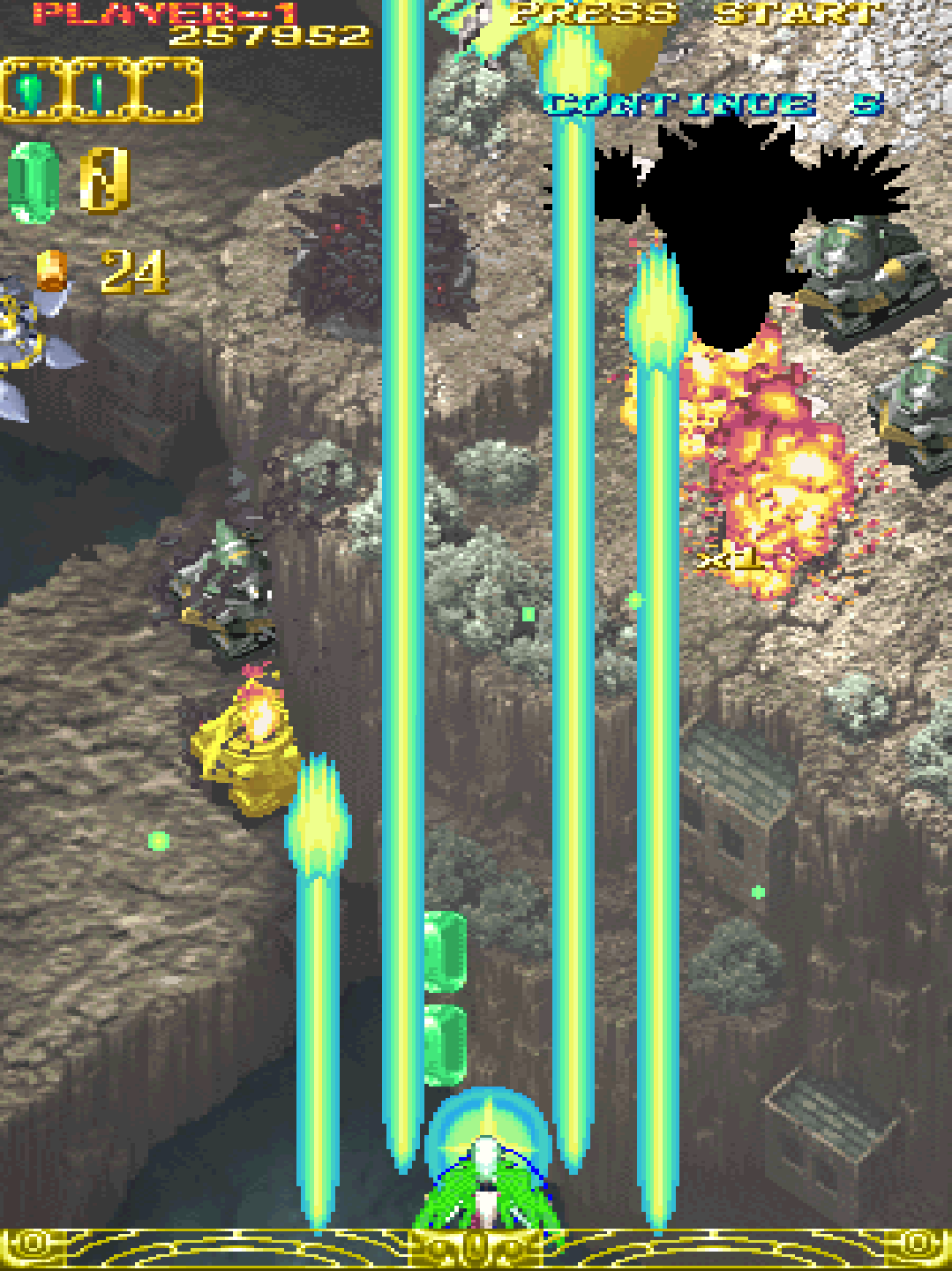Introduction
Released in 2003, Espgaluda was Cave’s spiritual successor to ESP Ra.De., expanding on its psychic-powered theme while introducing new mechanics and a refined scoring system. Known for its unique “Kakusei Mode,” which slowed down bullets and added a time-manipulation element to gameplay, Espgaluda stood out in the bullet hell shooter landscape. With its balance of accessible design and deep scoring potential, it became one of Cave’s most celebrated titles of the early 2000s.
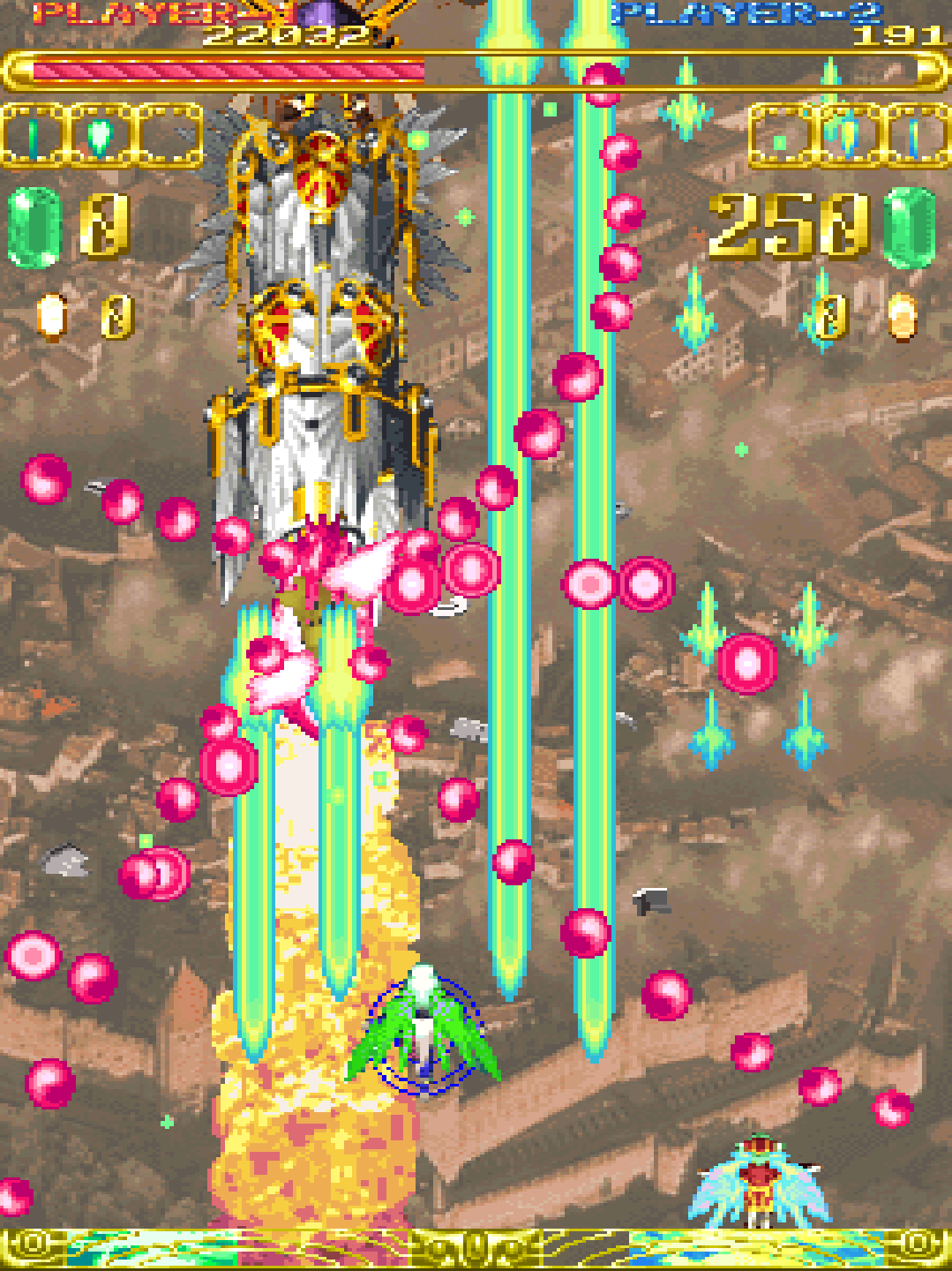
Development and History
- Developer: Cave
- Publisher: AMI
- Release Date: 2003
Following the cult success of ESP Ra.De., Cave sought to revisit the psychic-powered shooter concept with more polished mechanics and a stronger emphasis on accessibility. Designer Junya Inoue (Joker Jun) returned to lead character and visual design, giving Espgaluda an elegant, fantastical aesthetic. The game ran on Cave’s CV1000 hardware, enabling richer visuals and smoother bullet patterns than previous releases.
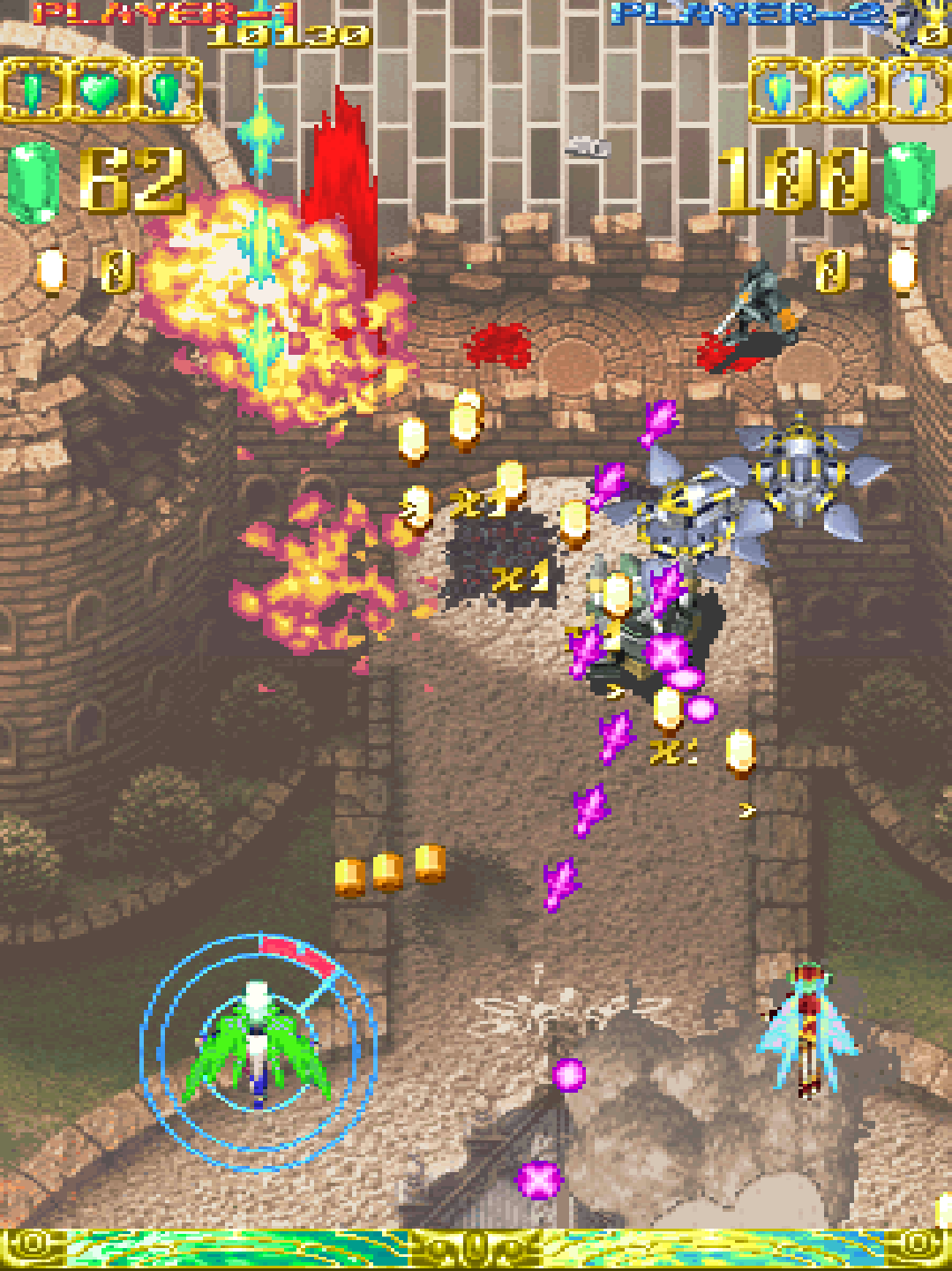
Gameplay Video
Gameplay and Mechanics
- Vertical Bullet Hell Shooter: Players choose between two psychic warriors, Ageha and Tateha, each with distinct attack styles.
- Kakusei Mode: A unique mechanic that slows enemy bullets when activated, turning them into gold when enemies are destroyed. This allows players to weave through dense patterns while chasing higher scores.
- Guard Barrier System: Provides temporary protection from bullets, offering a forgiving mechanic for beginners.
- Scoring System: Players maximize points by alternating between normal and Kakusei Mode, creating deep risk/reward gameplay.
- Bullet Patterns: Cave’s signature dense and elaborate bullet spreads are present, enhanced by stylish visual effects.
- Boss Battles: Multi-phase bosses feature complex attacks, challenging both reflexes and strategic use of Kakusei Mode.
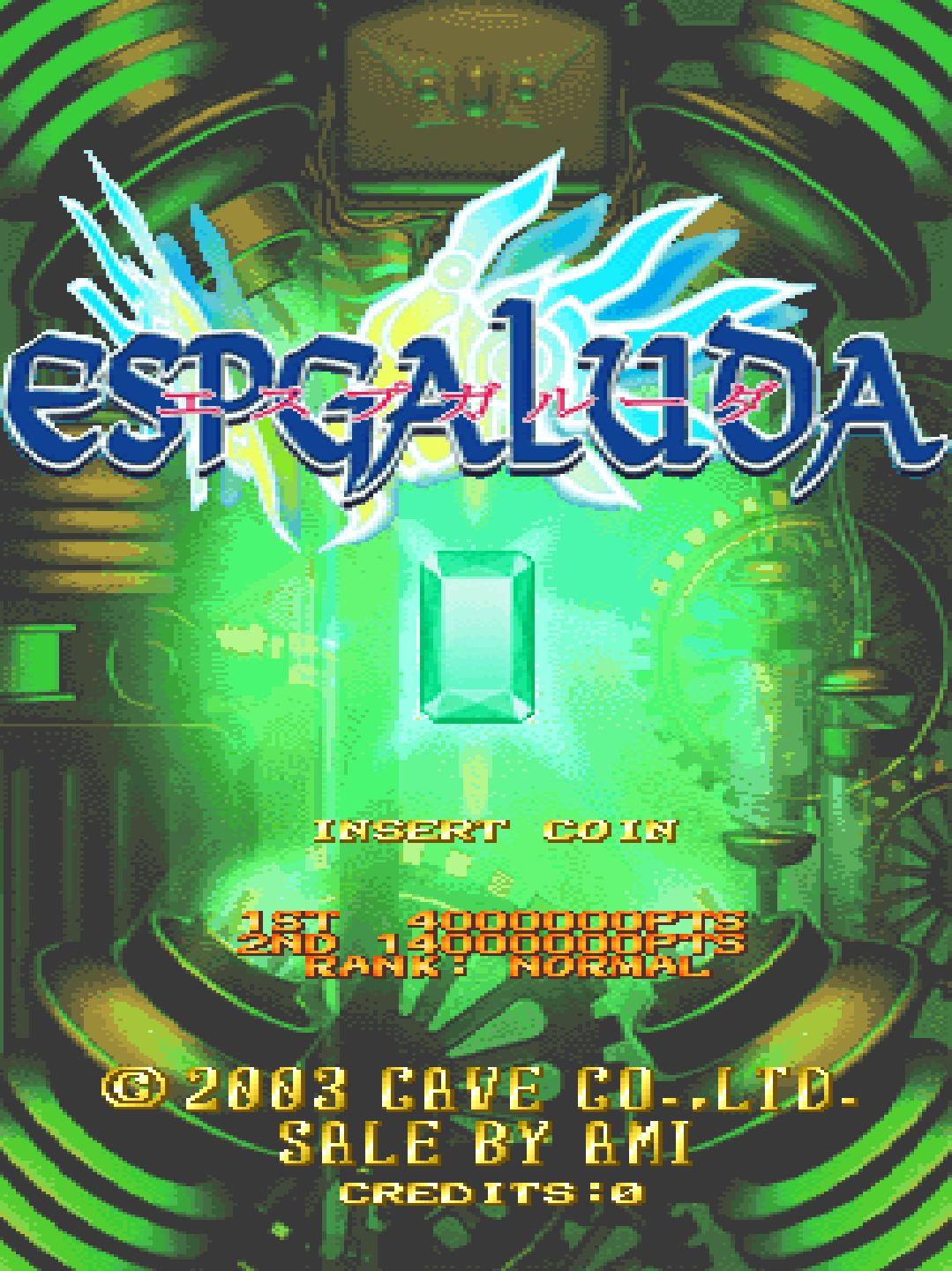
Cultural Impact and Legacy
Espgaluda was praised for making bullet hell shooters more approachable without sacrificing depth. Its time-manipulation mechanics influenced later Cave titles and inspired other developers exploring similar risk/reward systems. The game’s popularity led to console ports, including the PlayStation 2 and later digital releases, keeping it accessible to modern audiences. Espgaluda paved the way for its direct sequel, Espgaluda II, which further expanded on the game’s mechanics and narrative.
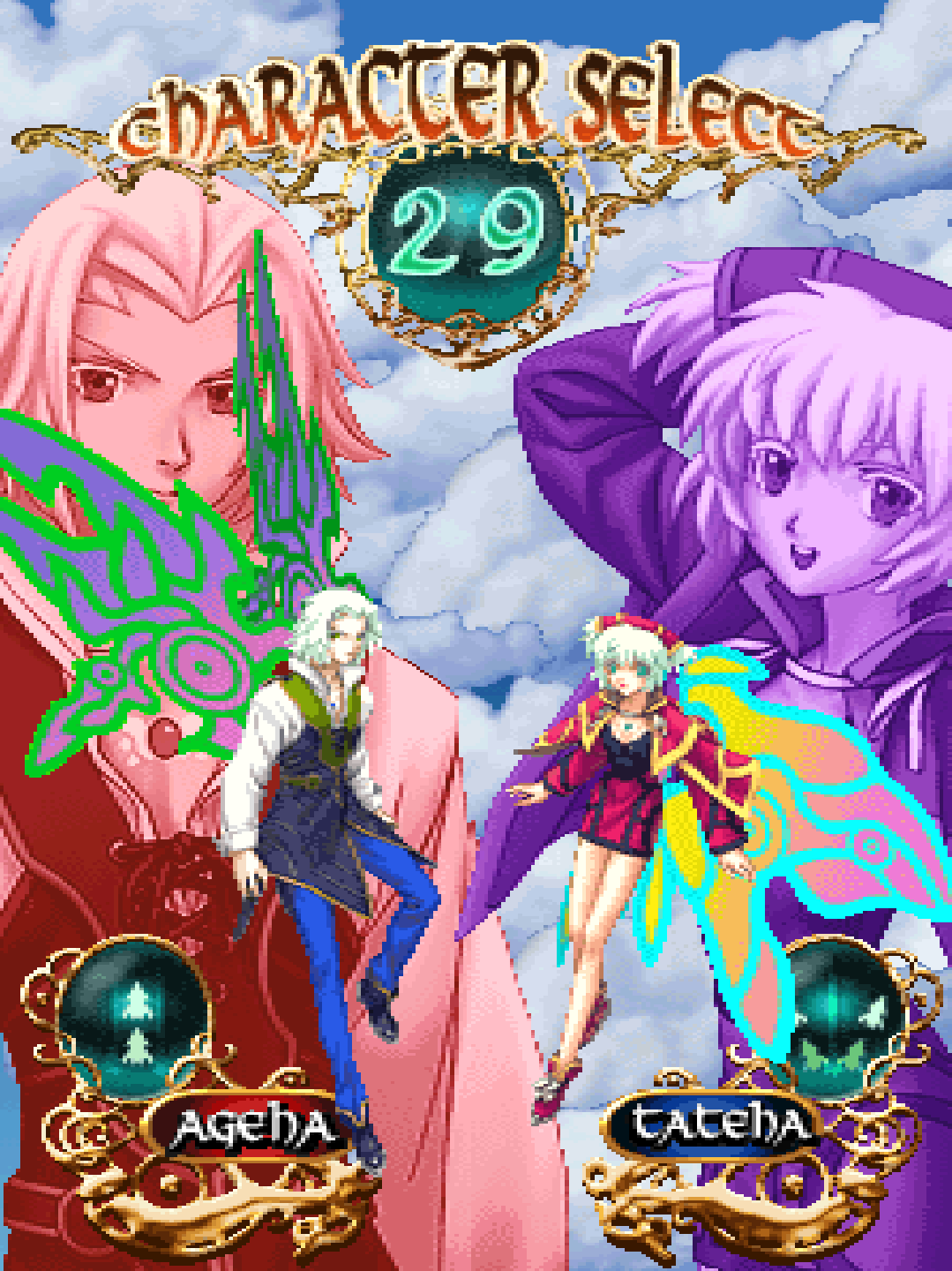
Fun Facts
- The name “Espgaluda” combines “ESP” (extrasensory perception) with “galuda,” inspired by Garuda, a mythical bird in Hindu and Buddhist mythology.
- Espgaluda’s Kakusei Mode was designed to make bullet dodging visually satisfying and strategically rewarding.
- The PlayStation 2 port added an Arrange Mode with remixed scoring and soundtrack changes.
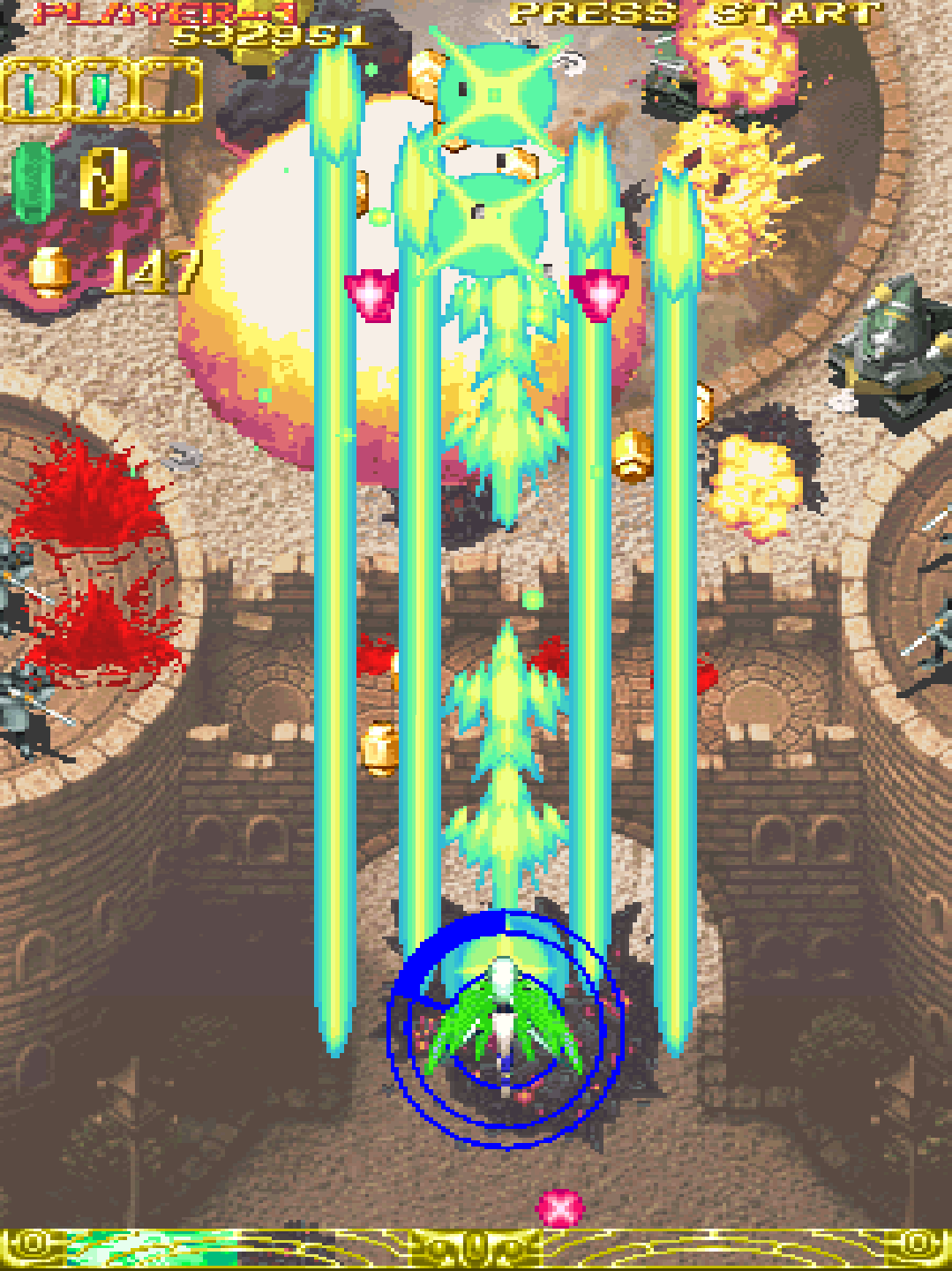
Conclusion
Espgaluda represents Cave’s commitment to pushing bullet hell shooters beyond traditional design, combining elegant visuals, approachable mechanics, and deep scoring systems. Its unique time-slowing mechanic and stylish presentation secured its reputation as one of Cave’s finest works. Whether you are a newcomer or a genre veteran, Espgaluda offers a compelling and distinctive shoot ’em up experience.
Want to Go Deeper Into Arcade History?
If this game left you craving more, dive into the complete stories behind some of the most iconic arcade genres and franchises. These articles explore the rise, innovation, and legacy of the games that shaped arcade culture:
- Top 25 Hidden Gem Arcade Games of All Time - Unearth the overlooked classics that still shine bright for arcade enthusiasts today
- Top 25 Beat ’Em Up Arcade Games of All Time – Discover the ultimate ranking of the greatest beat ’em ups ever to hit arcades
- The History of Beat ’Em Up Arcade Games – From Double Dragon to Final Fight, here’s how brawlers ruled the late ’80s.
- Donkey Kong’s Rise to Fame: How a Desperate Bet Created a Gaming Legend – The untold story of how Nintendo turned failure into a global icon, launching Mario, Miyamoto, and a new era of arcade storytelling
- The Economics of Arcade Gaming: The Golden Age of Coin-Op – This article explores the full arc of arcade economics: the explosive rise, the industry-shaking crash, and the waves of reinvention that kept the business alive
- The Complete History of Mortal Kombat Arcade – How a gritty fighter became a pop culture phenomenon.

